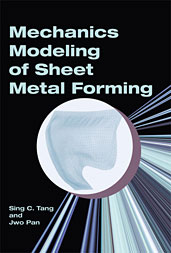Technical Paper
An Assessment of the Impact of Exhaust Turbine Redesign, for Narrow VGT Operating Range, on the Performance of Diesel Engines with Assisted Turbocharger
2019-04-02
2019-01-0326
Electrically assisted turbochargers are a promising technology for improving boost response of turbocharged engines. These systems include a turbocharger shaft mounted electric motor/generator. In the assist mode, electrical energy is applied to the turbocharger shaft via the motor function, while in the regenerative mode energy can be extracted from the shaft via the generator function, hence these systems are also referred to as regenerative electrically assisted turbochargers (REAT). REAT allows simultaneous improvement of boost response and fuel economy of boosted engines. This is achieved by optimally scheduling the electrical assist and regeneration actions. REAT also allows the exhaust turbine to operate within a narrow range of optimal vane positions relative to the unassisted variable geometry turbocharger (VGT). The ability to operate within a narrow range of VGT vane positions allows an opportunity for a more optimal turbine design for a REAT system.

